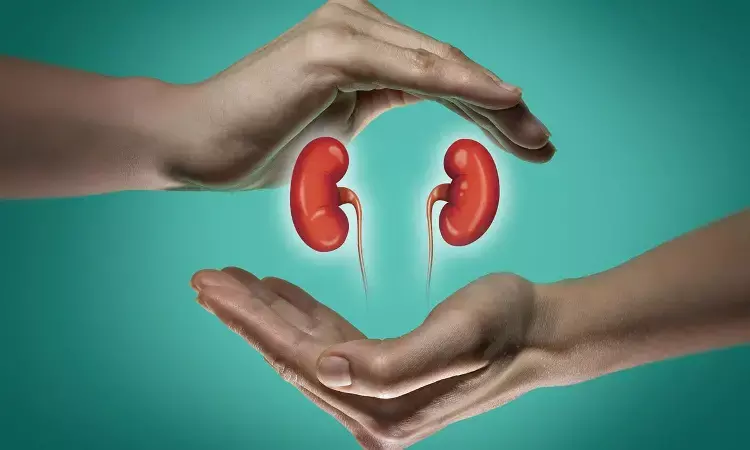- Home
- Medical news & Guidelines
- Anesthesiology
- Cardiology and CTVS
- Critical Care
- Dentistry
- Dermatology
- Diabetes and Endocrinology
- ENT
- Gastroenterology
- Medicine
- Nephrology
- Neurology
- Obstretics-Gynaecology
- Oncology
- Ophthalmology
- Orthopaedics
- Pediatrics-Neonatology
- Psychiatry
- Pulmonology
- Radiology
- Surgery
- Urology
- Laboratory Medicine
- Diet
- Nursing
- Paramedical
- Physiotherapy
- Health news
- Fact Check
- Bone Health Fact Check
- Brain Health Fact Check
- Cancer Related Fact Check
- Child Care Fact Check
- Dental and oral health fact check
- Diabetes and metabolic health fact check
- Diet and Nutrition Fact Check
- Eye and ENT Care Fact Check
- Fitness fact check
- Gut health fact check
- Heart health fact check
- Kidney health fact check
- Medical education fact check
- Men's health fact check
- Respiratory fact check
- Skin and hair care fact check
- Vaccine and Immunization fact check
- Women's health fact check
- AYUSH
- State News
- Andaman and Nicobar Islands
- Andhra Pradesh
- Arunachal Pradesh
- Assam
- Bihar
- Chandigarh
- Chattisgarh
- Dadra and Nagar Haveli
- Daman and Diu
- Delhi
- Goa
- Gujarat
- Haryana
- Himachal Pradesh
- Jammu & Kashmir
- Jharkhand
- Karnataka
- Kerala
- Ladakh
- Lakshadweep
- Madhya Pradesh
- Maharashtra
- Manipur
- Meghalaya
- Mizoram
- Nagaland
- Odisha
- Puducherry
- Punjab
- Rajasthan
- Sikkim
- Tamil Nadu
- Telangana
- Tripura
- Uttar Pradesh
- Uttrakhand
- West Bengal
- Medical Education
- Industry
Promising new way to prevent, treat kidney infections discovered by researchers

Ten IU School of Medicine researchers out of a team of 11 scientists, are responsible for the findings of a new study they conducted to investigate alternative ways to treat kidney infections. Their work, which is published in the high-quality research journal Nature Communications, examined how to utilize the kidneys' own internal infection-fighting capabilities to treat and even prevent kidney infections, with the knowledge that eventually antibiotics won't work.
According to statistics, urinary tract infections or UTIs are one of the most frequent bacteria-causing infections affecting people of all ages. UTIs become more severe kidney infections, when the bacteria ascend from the bladder to the kidney. Kidney infections are common, occurring in 13 out of 10,000 females and 4 of 10,000 males every year. Kidney infections may cause high fevers, permanent kidney damage or even sepsis. Additional data suggests that cases of antibiotic resistant UTIs are surging, making the way for more UTIs to become the more serious kidney infections.
Specifically, the research team discovered that a type of cells within the kidney called "intercalated cells" both consume bacteria and secrete acid, which is a process - known as phagocytosis - and has historically been a capability only associated with white blood cells.
"If you were to increase white blood cell activity to treat an infection, you would affect a person's whole body. However, since we found these cells work the same way but are only present in the kidney, the long-term potential would be the ability to activate these cells to prevent or clear an infection from the kidney," said Andrew Schwaderer, MD, professor of pediatrics at IU School of Medicine, and one of the study's senior authors. "The idea is that with this approach we will eventually be able to replace or complement antibiotic therapy."
Intercalated cells exist at the exit to the kidney and can act as its guardians; the first to encounter and consume the bacteria as they invade the kidney from the bladder and then secrete the acid to neutralize it.
The researchers initially predicted this pathway using single-cell RNA sequencing available through the IU School of Medicine's Medical Genomics Core. Utilizing normal human kidney tissue, they were able to sequence each intercalated cell individually, allowing them to tell exactly what's going on in one cell type versus the other. When an advanced software analyzed the cells, phagocytosis capabilities of these cell was predicted as a leading function.
"It was also interesting that we started with human tissue as opposed to mouse models and then went back to the mouse, said Vijay Saxena, PhD and lead author of this study. "It's a very nonbiased way to study a cellular function and a very translational approach."
Utilizing IU School of Medicine's O'Brien Imaging Center, one of only three available in the world, allowed researchers the ability to image mice in real time, delivering live results. This approach is preferable to a cell culture system which may or may not reflect what happens in the human body.
Reference:
The study titled, "Kidney intercalated cells are phagocytic and acidify internalized uropathogenic Escherichia coli," is published in the journal Nature Communications.
DOI: https://www.nature.com/articles/s41467-021-22672-5
Hina Zahid Joined Medical Dialogue in 2017 with a passion to work as a Reporter. She coordinates with various national and international journals and association and covers all the stories related to Medical guidelines, Medical Journals, rare medical surgeries as well as all the updates in the medical field. Email: editorial@medicaldialogues.in. Contact no. 011-43720751
Dr Kamal Kant Kohli-MBBS, DTCD- a chest specialist with more than 30 years of practice and a flair for writing clinical articles, Dr Kamal Kant Kohli joined Medical Dialogues as a Chief Editor of Medical News. Besides writing articles, as an editor, he proofreads and verifies all the medical content published on Medical Dialogues including those coming from journals, studies,medical conferences,guidelines etc. Email: drkohli@medicaldialogues.in. Contact no. 011-43720751


